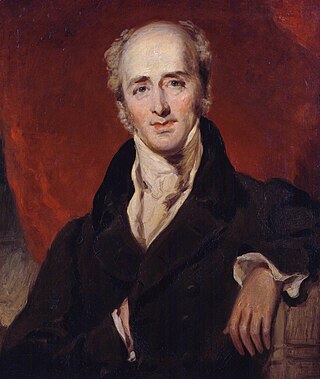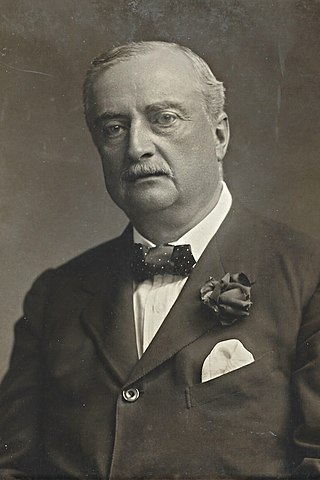
The 1918 United Kingdom general election was called immediately after the Armistice with Germany which ended the First World War, and was held on Saturday, 14 December 1918. The governing coalition, under Prime Minister David Lloyd George, sent letters of endorsement to candidates who supported the coalition government. These were nicknamed "Coalition Coupons", and led to the election being known as the "coupon election". The result was a massive landslide in favour of the coalition, comprising primarily the Conservatives and Coalition Liberals, with massive losses for Liberals who were not endorsed. Nearly all the Liberal MPs without coupons were defeated, including party leader H. H. Asquith.

The 1832 United Kingdom general election was the first United Kingdom general election held in the Reformed House of Commons following the Reform Act. The election saw the Whigs win an overall majority of 224 seats, with the Tories winning less than 30% of the vote.

North Antrim is a parliamentary constituency in the United Kingdom House of Commons. The current MP is Jim Allister (TUV).

East Antrim is a parliamentary constituency in the United Kingdom House of Commons. The current MP is Sammy Wilson.

Belfast South was a parliamentary constituency in the United Kingdom House of Commons.

South Down is a parliamentary constituency in the United Kingdom House of Commons. The current MP seat is vacant due to the dissolution of parliament ahead of the 2024 United Kingdom general election.

North Down is a parliamentary constituency in the United Kingdom House of Commons. The current MP is Alex Easton, elected at the 2024 United Kingdom general election.
Armagh or County Armagh is a former county constituency in the House of Commons of the United Kingdom. It was a two-member constituency in Ireland from 1801 to 1885 and a single-member constituency in Northern Ireland from 1922 to 1950. It was replaced in boundary changes in 1983.
County Tyrone is a former UK Parliament constituency in Ireland, returning two Members of Parliament (MPs).
Dundalk was a parliamentary borough constituency in Ireland, which returned one Member of Parliament (MP) to the House of Commons of the Parliament of the United Kingdom. It was an original constituency represented in Parliament when the Union of Great Britain and Ireland took effect on 1 January 1801, replacing the Dundalk constituency in the Parliament of Ireland.
Waterford City was a United Kingdom parliamentary constituency, in southeast Ireland.
North Kilkenny was a parliamentary constituency in Ireland, represented in the House of Commons of the Parliament of the United Kingdom. It returned one Member of Parliament (MP) from 1885 to 1922.
South Dublin, a division of County Dublin, was a county constituency in Ireland from 1885 to 1922. It elected one Member of Parliament (MP) to the House of Commons of the Parliament of the United Kingdom, using the first past the post voting system.
Multi-member constituencies existed in the Parliament of the United Kingdom and its predecessor bodies in the component parts of the United Kingdom from the earliest era of elected representation until they were abolished by the Representation of the People Act 1948. Since the 1950 general election, all members of the House of Commons have been elected from single-member constituencies.
The Wick Burghs by-election was a Parliamentary by-election held on 8 December 1913. It was a Scottish Highland constituency that returned one Member of Parliament (MP) to the House of Commons of the United Kingdom, elected by the first past the post voting system. The constituency was a district of burghs representing the parliamentary burghs of Cromarty, Dingwall, Dornoch, Kirkwall, Tain and Wick. The by-election took place during the third anniversary of the Liberal Government's re-election of December 1910. It was thought to be a key indicator to the outcome of the following general election anticipated to take place in 1914–15.
The Glasgow Central by-election was a Parliamentary by-election held on 2 March 1909. The constituency returned one Member of Parliament (MP) to the House of Commons of the United Kingdom, elected by the first past the post voting system.

The 1900 United Kingdom general election in Ireland was held in September and October 1900. Ninety-nine of the seats were in single-member districts using the first-past-the-post electoral system, and the constituencies of Cork City and Dublin University were two-member districts using block voting.

The January 1910 United Kingdom general election in Ireland was held with ninety-nine of the seats in single-member districts using the first-past-the-post electoral system, and the constituencies of Cork City and Dublin University were two-member districts using block voting.









